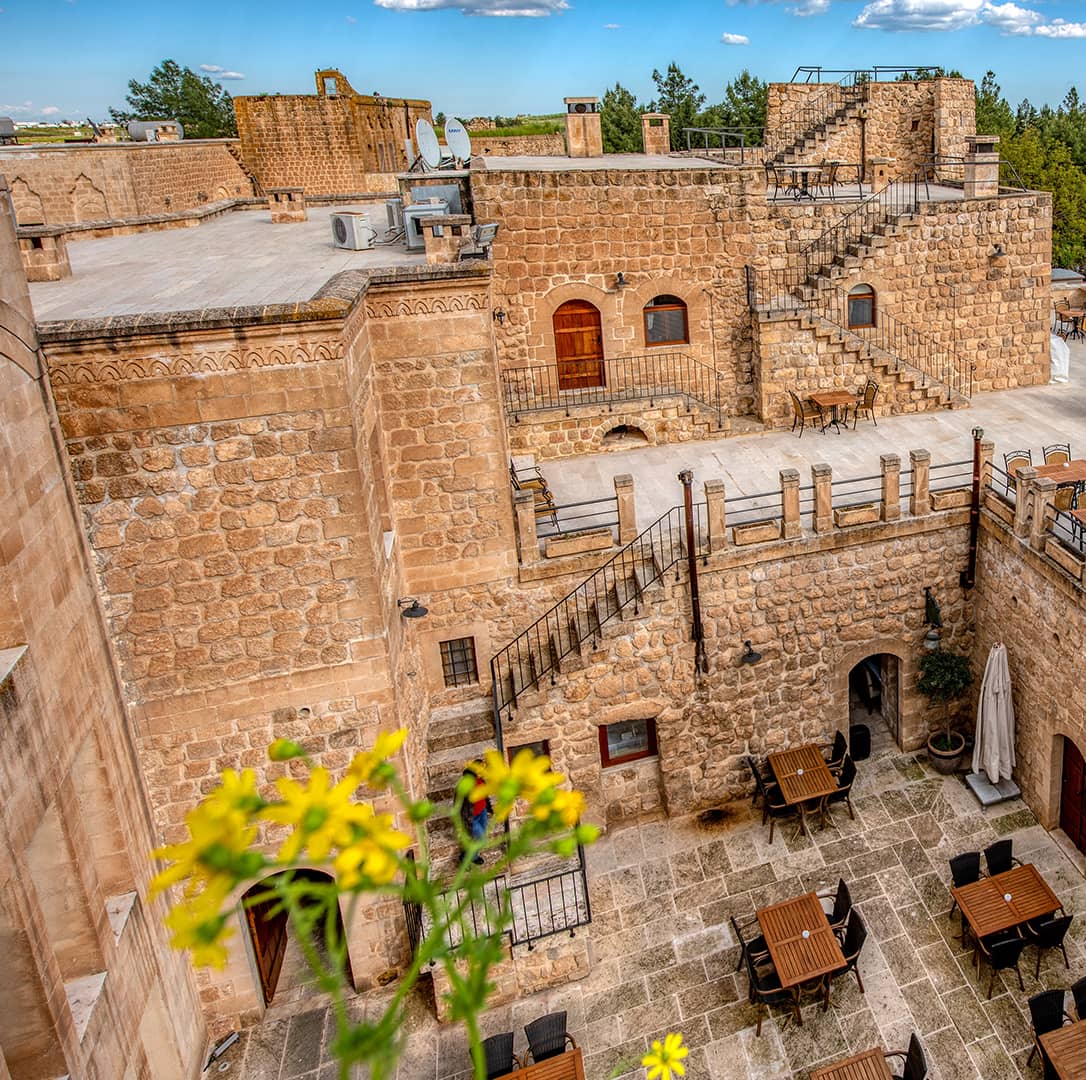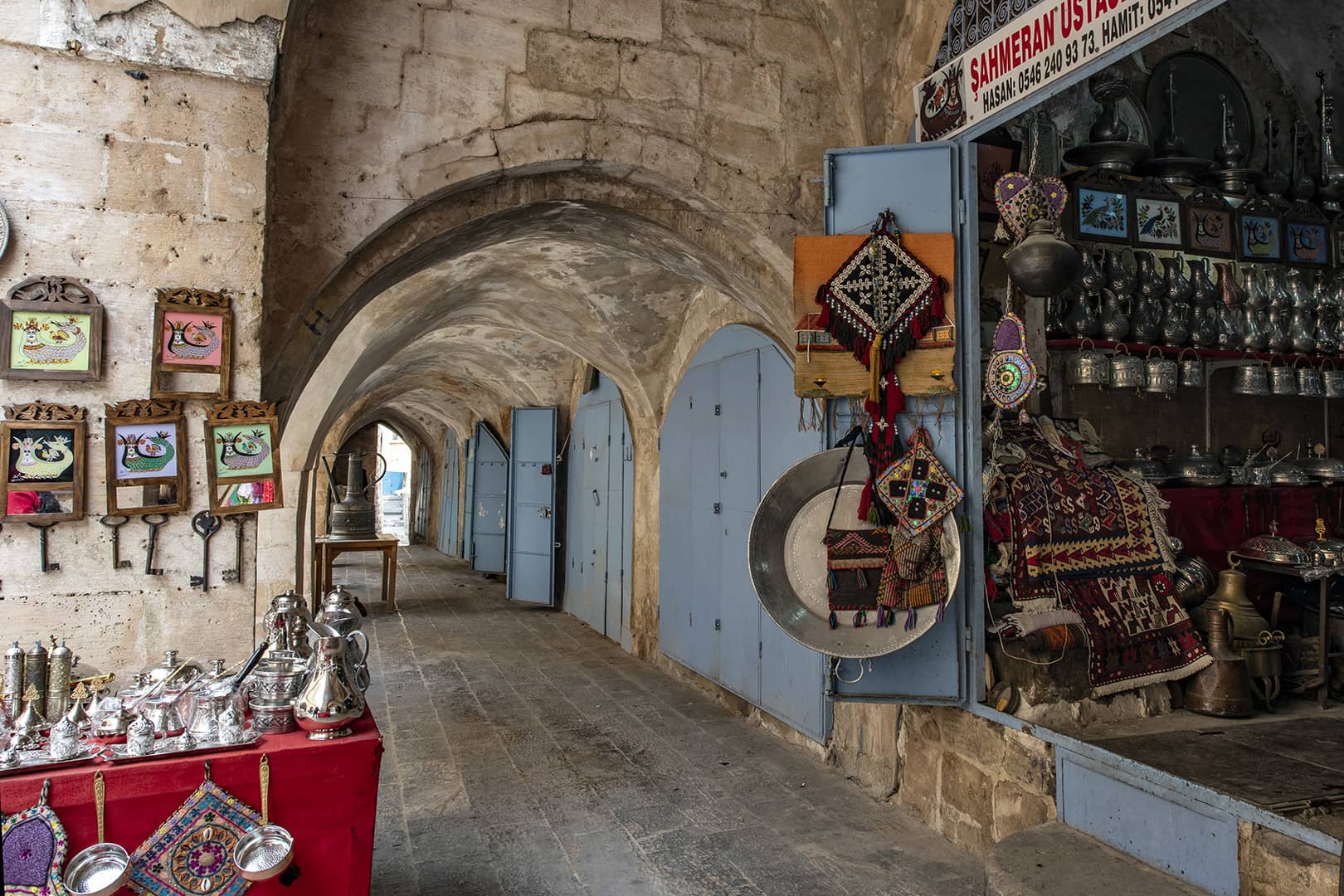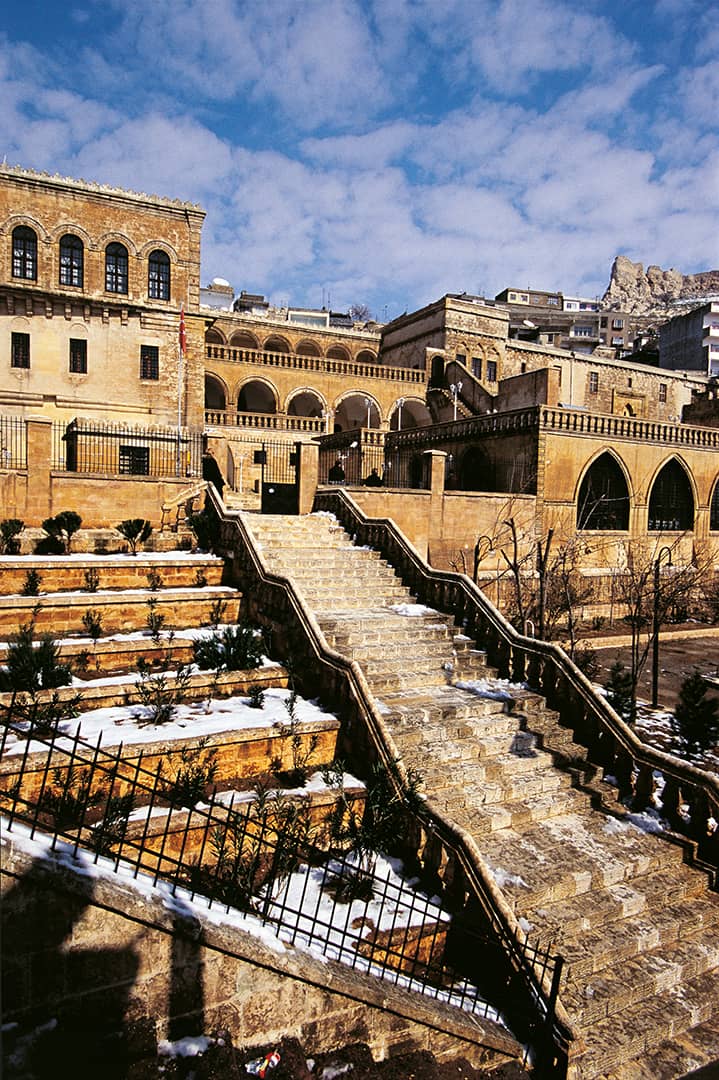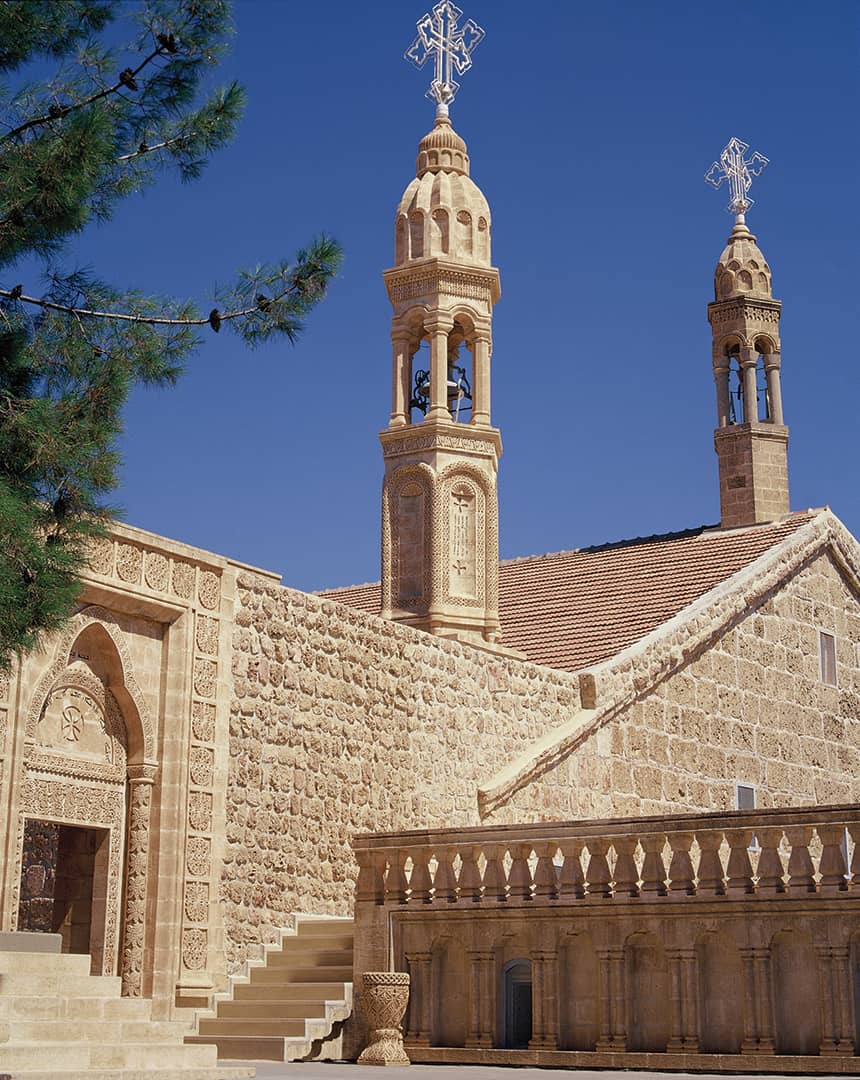Commercial Video
Deyrulzafran Monastery:

Deyrul Zafaran derives from deyr and zafaran meaning monastery and saffron in Arabic respectively, after the saffron growing in the terrain around the monastery. Deyrul Zafaran Monastery (Deyrul Zafaran Manastırı) was built on the grounds of a previous Temple of the Sun belonging to the Shamsi and a compund that was used by the Romans as a citadel during the 5th century. Deyrul Zafaran housed the Patriarchy for 640 years and is still a very important center of the Syriac Church (Süryani Kilisesi) as well as the residence of the Metropolitan Bishop of Mardin.
The first printing press of the region was purchased by the Patriarch of the time in 1876 from England and transported to the monastery to print books in Syriac, Arabic, Ottoman and Turkish, until 1969. The monastery is a beautiful example of architecture with domes, arched columns, wooden engravings as well as interior and exterior masonry, and offers mosaics from that period even today.
The double courtyarded monastery hosts a Temple of the Sun besides Mor Hananyo’s Domed Church (Kubbeli Kilise), The Church of Virgin Mary (Meryem Ana Kilisesi), and The House of the Saints (Azizler Evi).
Dara Ancient City

Mesopotamia’s most magnificent ancient site Dara is in Oğuz Village (Oğuz Köyü) located 30 kms South East of Mardin. The ruins of the ancient site and the village have interfered into each other and ruins can be seen all over the village. Archeological excavations that started in 2008 tells a lot from antiquity to our day even in a small fragment of the city. Syriac, Zarathustrian, and Turkish domed burials meet at the large necropolis of Dara and make it even more worth visiting.
The city was first built as a military garrison by the Emperor Anastasios (491 – 518 AD) in 506. It is also a very important link of the defensive chain of the Eastern Roman Empire’s Eastern border to the Sasanids. It is seen that the city was planned as a civilian residential area besides military reasons. Strong city walls, aquaducts, bridges, a cistern, a church, a baptistery, rock tombs, quarries, and cave houses meet the necessities of the city. The city’s glamour carried on until the early Medieval Era and then vanished.
If you have previously paid a visit to Ephesus, you should definitely visit Dara Ancient City (Dara Antik Kenti) that enlightens the history of Mesopotamia.
Mardin houses and narrow streets

Historical Bazaars:

The towns commercial life is quite colorful and it is possible to see a variety of merchants and craftsmen. Authentic Bazaars offer various commodity to local and foreigner visitors. Kayseriye Mall (Kayseriye Pasajı), Revaklı Bazaar (Revaklı Çarşı), The Coppersmiths' Bazaar (Bakırcılar Çarşısı), The Jewellery Bazaar (Kuyumcular Çarşısı) and The Old Bazaar (Eski Çarşı) are still active and visited frequently.
Mardin Museum:

Exhibiting the city’s archaeology and history with a collection over 45.000 artefacts from the Paleolithic Age to date, Mardin Museum (Mardin Müzesi) is a true institution of education, learning and communication, exceeding the classical definition of museums as “places to protect and exhibit artefacts”.
The Museum exhibits ceramics, barands and cylindirical seals, coinage, oil lamps, figurines, teardrop bottles, jewelry and vases that belong to the Early Bronze, Middle Bronze, Late Bronze, Early Iron Ages and the Assyrian, Urartian, Persian, Roman, Byzantine, Seljuq, Artuqids and the Ottoman Eras.
The most attractive pieces of the Museum are 3 large earthenware jars of gold and silver coinage and jewelry that were brought to daylight in 2009 during an infrastructure work in Mardin’s Sürekli Village of the Kızıltepe County. These pieces are believed to tbe the Treasury of the Forty Thieves.
The Museum also hosts archeological and etnographical exhibit halls, conference halls and recreational lounges.
Midyat:

Midyat which has entered the Tentative List of UNESCO World Heritage Sites is located 70 kms away from Mardin, and is ready to take you to a journey in history with its stone mansions, churches, monasteries and Bazaars which all carry Medieval prints.
Midyat’s history goes back to the Assyrians and is an important center for the Syriacs. It is considered the center of Tur Abdin region and hosts the Syriac Metropolitan Bishopry (Süryani Piskoposluğu). Muslims, Christians and the Ezidis live together in harmony in this county that has become the sign of peace and tolerance.
Midyat Guest House (Midyat Konuk Evi), one of the symbolic structures of Midyat was also used for a number of Turkish TV series. This 3 stored stone house offers a terrace with views of Midyat, definitely worth seeing.
Midyat’s historical bazaar still offers Telkari – silver filigree embroidery by the Syriac artisanal masters, Syriac wine, and Midyat works – printed cotton cloth.
Estel, attached to Midyat at a later age, is a Muslim district with narrow cobbled alleys and old stone houses. The 200 year old Grand Mosque (Ulu Cami),Estel Han and Gelüşke Hanı offering regional goods are definitely worth seeing.
The Grand Mosque:

The Grand Mosque (Ulu Cami), the oldest and most important temple of Mardin was built in 1176 during the time of the Artuqid Sultan Kutbettin Ilgazi. Reflecting the architectural features of the Artuqid Period, The Grand Mosque becomes a sign of Mardin with its segmented dome and minaret. History reports that the original structure consisted of 2 minarets of which one could survive to our day. The current day ornate minaret with a cylindirical body was built during the 19th century. The minaret, visible from every other corner of the city, is one of the first visuals on remembers about Mardin. Some of the Syriac writers claim that the building was converted from a church. Even if the building is not converted from a church, it is possible that a church was here in earlier times.
Mor Gabriel Manastırı:

Mor Gabriel Monastery (Mor Gabriel Manastırı) (also known as Deyrulumur – The House of the Priests) is the oldest standing Asyriac Orthodox Monastery (Asur Ortodoks Manastırı) in the World. Located at Turabdin, known as the hometown of the Syriacs at Mardin’s Midyat County, Mor Gabriel Monastery is one of the oldest monasteries with a history of 1600 years. The monastery was built by Mor Shmuel and Mor Shemun in 397 and flourisehd over the centuries with donations and contributions of the Roman Emperors. The impeccable structure was built by Midyat’s stone cut bricks, and is of utmost historical importance with structures left from 5th and 6th centuries, Byzantine mosaics, domes and portals.
The monastery which is accepted as the second Jerusalem had various names through history. In the early periods it was named after the founders and in the following centuries the name Dayro d’Umro meaning the house of the priests in Syriac derived into Deyr-el-Umur and then Deyrulumur in Turkish. The name Mor Gabriel, still in use today is after Mor Gabriel, the Metropolitan Bishop of Turabdin who lived during the 7th century and played a major role in improving the monastery, and was given sainthood later.
